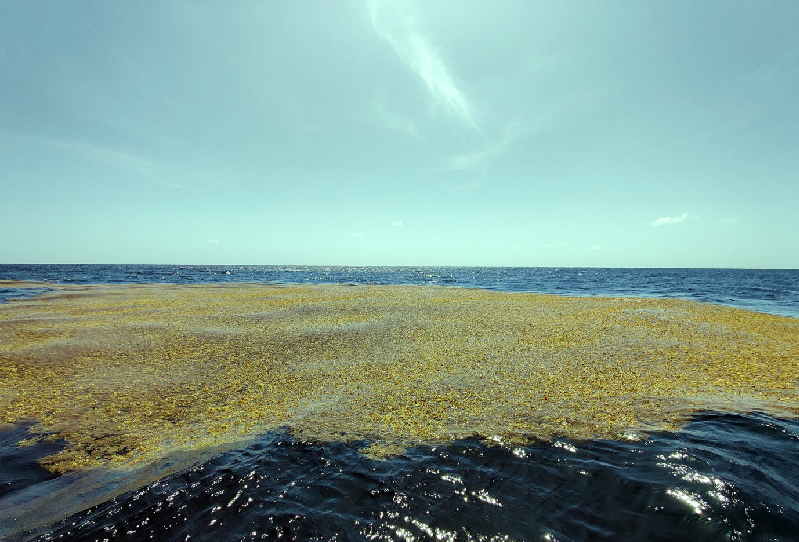Sargassum Briefing report from National Parks Authority
The Islands of the Caribbean, inclusive of Antigua, Barbuda and Redonda, have been affected by Sargassum Seaweed (Sargassum sp.) since 2011. Sargassum blooms appear to originate off the coast of South America and have been affecting the Caribbean island chain with varying ecological and anthropogenic/economic effects. Sargassum seaweed grow on the ocean surface and provide ecosystem services such as habitat for juvenile marine organisms (e.g. fish, turtles) and foraging areas while on the sea, but biologically degrade upon contact with the shoreline, leading to negative impacts.
The concerns of last month forecast have materialized into worry based on this month’s forecast, as the amount of Sargassum coming across the Central Atlantic continue to rise. The University of South Florida Optical Oceanography Lab has been examining satellite images to track the sargassum blooms over the years, and states: “Large amounts of Sargassum have been seen in the Central West Atlantic, the region east of the Lesser Antilles and the Central East Atlantic. In all regions combined, total Sargassum amount increased from ~3.2M metric tons in December 2020 to ~5.1M tons in January 2021, similar to January 2019, and much higher than previous years outside of January 2018”. The maps below, with warm colours representing high abundance, displays the years 2018 to 2021.
2021 has definetly started with a bang, and Sargassum is looking to have a stellar year. This forecast indicates that levels of Sargassum are going to increase, leading to larger beaching events during the months of February and March. Heavy Sargassum beaching events has implications for marine species such as nesting turtles, marine ecosystems like seagrass beds and coral reefs, marine related economies and industries (Hotels, Reverse Osmosis Plants, etc.) and human health. Stakeholders are advised to be vigilant and prepare for the impacts of a heavy Sargassum year in 2021. We will continue to monitor the satllite reports and track Sargassum movement across the Atlantic to the best of our abilities.


